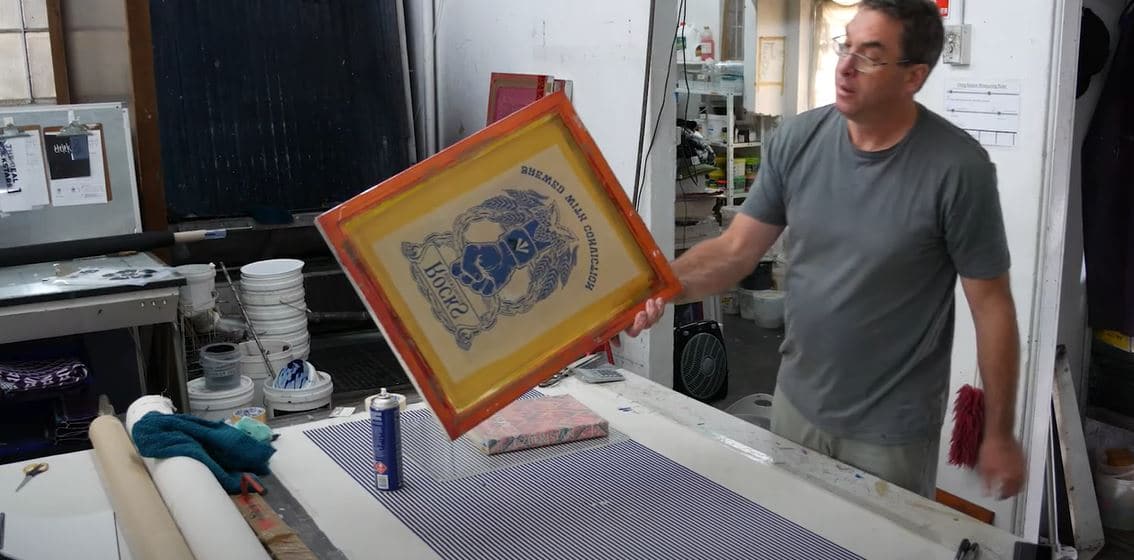ChatGPT said: Why 10:9 Design Screen Printing is perfect for corporate gear
The Important Guide to Understanding Screen Printing and Its Versatile Uses
Screen printing has a rich background that goes back to old times, developing right into an advanced technique used across numerous markets today. This guide explores the ins and outs of the screen printing process, detailing its applications in advertising and marketing, home, and fashion design - 10:9 Design Screen Printing Texas. Understanding these fundamentals can open up creative capacity for both imaginative and industrial projects. The complying with sections will expose crucial tips and techniques to boost one's screen printing undertakings
The Background of Screen Printing
Screen printing has roots that map back centuries, its evolution shows the technological and creative improvements of different cultures. Originating in old China, the technique was at first utilized for decorating fabrics and later spread to Japan, where it came to be important to Ukiyo-e woodblock printing. The approach shifted to Europe in the 18th century, where it obtained appeal amongst craftsmens and industrial printers. The development of picture solution in the 20th century changed screen printing, enabling more complex styles and higher effectiveness. Artists like Andy Warhol better drove its popularity, using the tool to produce legendary jobs that mixed commercialism and great art. By the late 20th century, screen printing had established itself as a versatile strategy, used in vogue, advertising and marketing, and great art. Today, it continues to evolve, incorporating electronic technology and increasing its applications across various sectors.
The Screen Printing Process Explained
Screen printing transforms imaginative visions into substantial styles through a collection of exact steps. Initially, a picture is developed and after that transferred onto a screen, normally constructed from fine mesh material stretched over a framework. A light-sensitive solution is put on the screen, which is revealed to light, hardening in locations not covered by the picture. After cleaning out the unhardened emulsion, a pattern is formed.
Next, the screen is put over the substratum, whether it be material, paper, or another material. Ink is after that pushed with the open locations of the pattern utilizing a squeegee, transferring the layout onto the substratum below. This procedure can be duplicated for several colors, needing separate screens for each shade. Lastly, the printed item is healed utilizing heat to assure the ink adheres correctly, causing a sturdy, dynamic layout on-line.
Kinds Of Screen Printing Techniques

In addition, specialty methods, such as discharge screen printing, get rid of dye from the textile to create softer prints, while aluminum foil screen printing uses metallic aluminum foil to accomplish a shiny finish (10:9 Design contact). Each technique supplies unique characteristics, dealing with different imaginative demands and manufacturing scales, eventually expanding the opportunities within the screen printing domain
Applications of Screen Printing in Numerous Industries

In addition, the signage and advertising fields make use of screen printing for producing appealing displays and banners. This method permits vibrant shades and intricate designs that record interest. In electronic devices, screen printing is utilized for using conductive inks to motherboard, necessary for component links. Moreover, the home décor sector welcomes screen printing to generate distinct designs on textiles and wall art. Overall, screen printing acts as a critical device throughout varied fields, enhancing products with customized and aesthetically enticing graphics.
Tips for Effective Screen Printing Projects
While taking on a screen printing project, mindful focus to information can significantly enhance the final end result. Choosing high-quality materials is vital; this includes the screen, inks, and substrates. Using suitable mesh matters can impact ink deposition and information resolution. Preparation is just as essential; detailed cleansing of screens and proper direct exposure times ensure crisp prints.
Next off, accurate registration is critical for multi-color prints. Making use of alignment tools can help achieve exact layering. In addition, screening prints on scrap materials before manufacturing helps determine prospective problems without squandering sources.

Frequently Asked Concerns
What Materials Are Finest for Screen Printing on Textile?
Cotton and polyester blends are perfect for screen printing on fabric due to more tips here their durability and ink absorption. Furthermore, specialized fabrics like silk or canvas can produce unique textures and surfaces, improving the total design top quality.
How Do I Clean and Maintain Screen Printing Devices?
To cleanse and preserve screen printing equipment, one need to on a regular basis wash screens with appropriate solvents, check squeegees for wear, lube moving components, and store all items in a completely dry, dust-free environment to lengthen their life-span.
What Are the Environmental Effects of Screen Printing?
Screen printing can have significant environmental effects, including chemical waste from inks and solvents, water use throughout cleansing processes, and power usage. Environmentally friendly materials and lasting techniques are vital for decreasing these negative results.
Can Screen Printing Be Done at Home Efficiently?
Screen printing can be effectively done at home with the ideal products and techniques. Hobbyists can create top quality prints, though success depends on their ability level, devices, and understanding of the procedure entailed.
What Are the Prices Connected With Starting a Screen Printing Service?

Starting a screen printing business entails expenses for devices, materials, and workspace. First expenditures usually range from a couple of hundred to numerous thousand bucks, depending on the range, quality of machinery, and wanted manufacturing ability.
Screen printing has a rich history that dates back to ancient times, progressing into an advanced technique utilized across numerous sectors today. One more technique, rotary screen printing, employs round displays, facilitating continuous printing on fabric rolls, thus improving effectiveness for massive manufacturings. In addition, specialty techniques, such as discharge screen printing, remove color from the fabric to develop softer prints, while foil screen printing applies metallic foil to achieve a glossy coating. In the fashion field, screen printing is commonly used to produce dynamic styles on clothing, enabling brands to display their unique styles. Cotton and polyester blends are suitable for screen printing on textile due to their durability and ink absorption.